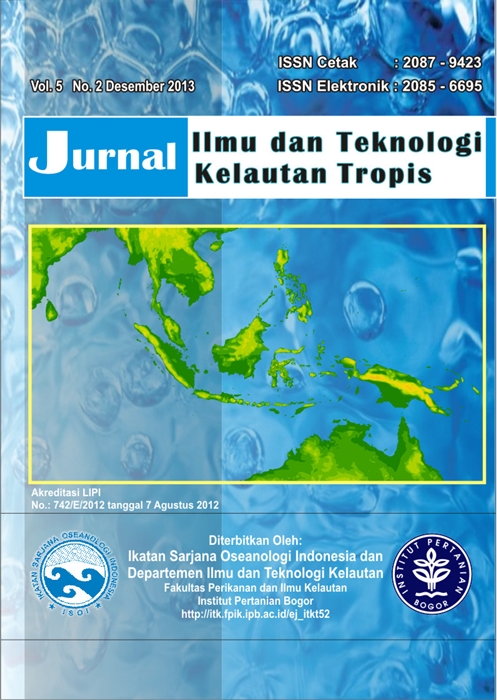MACROALGAE BIOMASS PRODUCTIVITY IN AMBALAU ISLAND WATERS, SOUTH BURU DISTRICT
Abstract
Studies on the diversity and density of macroalga have been carried out in Ambalau island waters, south Buru district since 2010. The purposes of this study were to determine the diversity, density, frequency, and the dominance of macroalga in the coastal waters of the Ambalau island. Data collection with squares transect line method were conducted in October-November 2009. The results showed that the coastal areas of Masawoy showed the highest values in diversity, density, frequency, and the dominance of macroalga in the study area with 33 species from 20 genera consisting of 14 species of green alga, 10 species of red alga, and 9 species of brown alga. Caulerpa, Halimeda, Gracilaria, Acanthophora, Sargassum, and Padina were the most dominance in the region. The highest diversity, density, frequency, and dominance of macroalga on the Masawoy coastal waters were due to its habitat conditions in relatively good condition consisting of dead coral rubble, sand, coral live with seagrass vegetation dominated by Thalasia hemprizii and Enhalus acuroides. Meanwhile, habitat conditions at other locations have suffered a severe damage and dominated by dead coral. Environmental conditions in the study region were within the limits of decent support for the growth of macro alga.
Keywords: macroalga, biodiversity, density, frequency, dominance, Ambalau
Authors
This work is licensed under a Creative Commons Attribution 4.0 International License.
Jurnal Ilmu dan Teknologi Kelautan Tropis i is an open-access journal, meaning that all content is freely available without charge to the user or their institution. Users are allowed to read, download, copy, distribute, print, search, or link to the full texts of the articles in this journal without needing to request prior permission from the publisher or the author.
All articles published by Jurnal Ilmu dan Teknologi Kelautan Tropis are licensed under the Creative Commons Attribution 4.0 International License. This allows for unrestricted use, distribution, and reproduction in any medium, provided proper credit is given to the original authors.
Authors submitting manuscripts should understand and agree that the copyright of published manuscripts is retained by the authors. Copyright encompasses the exclusive rights of authors to reproduce, distribute, and sell any part of the journal articles in all forms and media. Reproduction of any part of this journal, its storage in databases, and its transmission by any form or media is allowed without written permission from Jurnal Ilmu dan Teknologi Kelautan Tropis.


